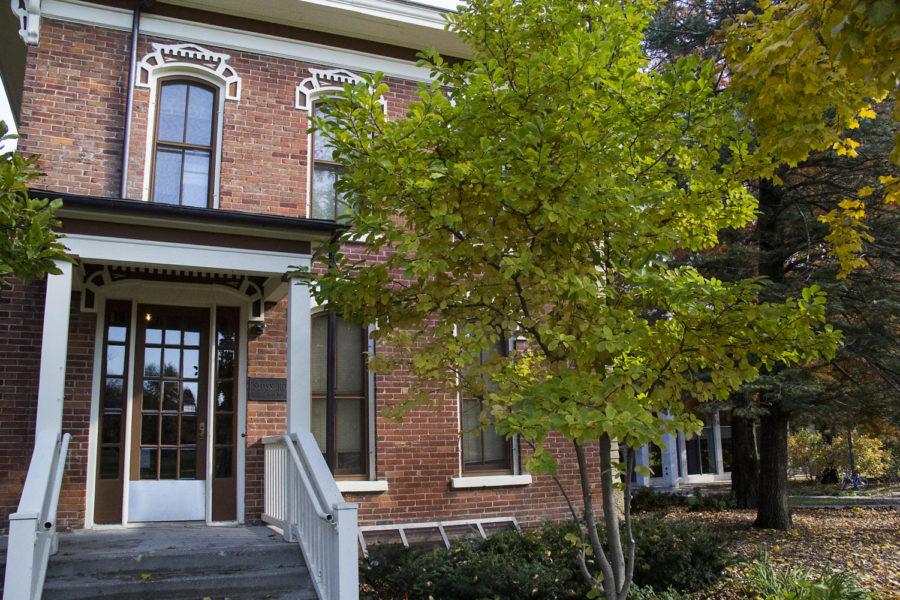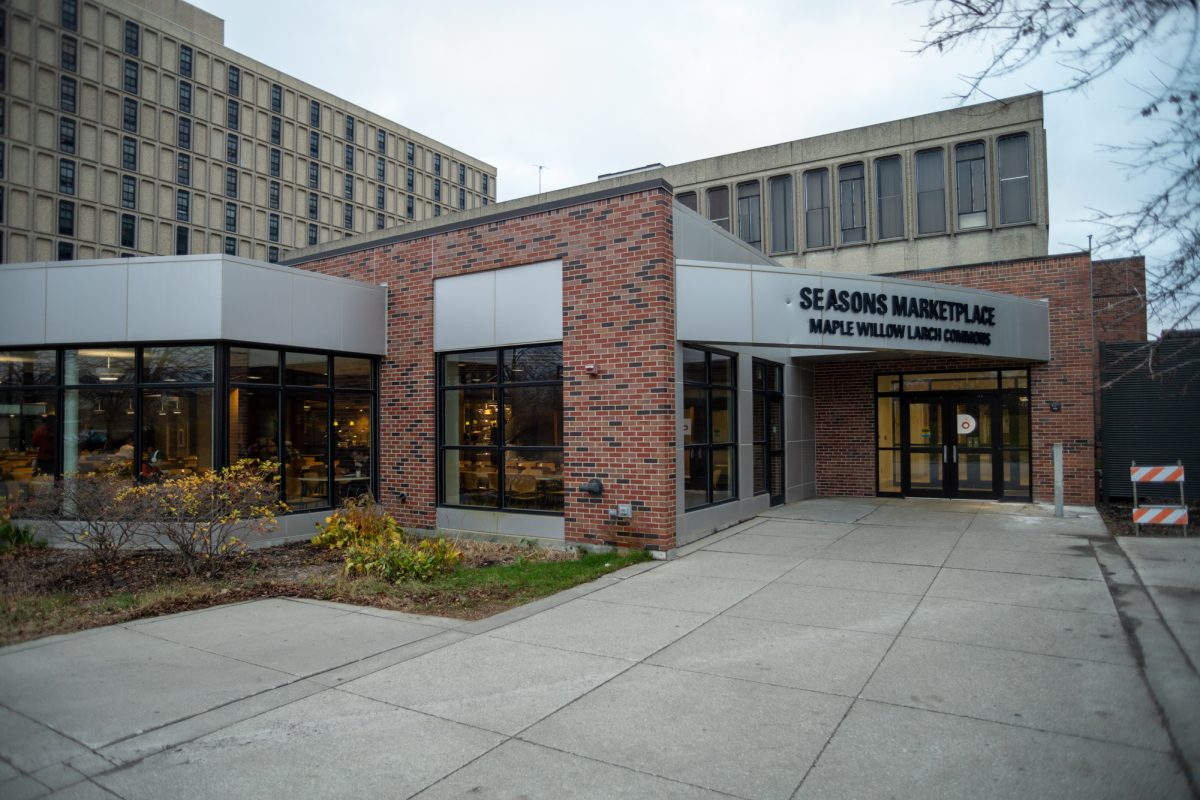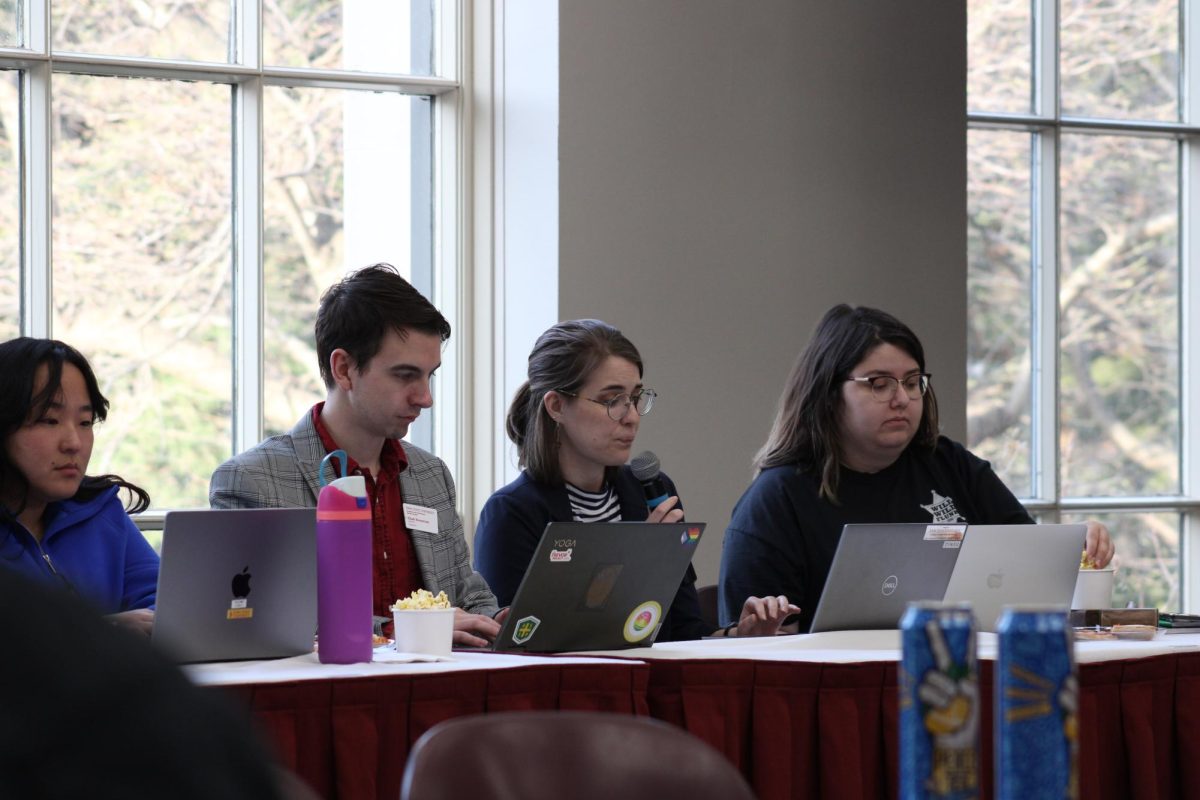ISU clears Ash trees to combat Emerald Ash Borer
An ash tree stands in front of the Margaret Sloss House. The City of Ames and Iowa State are waging a war on the Emerald Ash Borer, which has recently been found in Story County. Some trees will be cut down to prevent the spread of the invasive beetles.
October 24, 2014
The fight against the Emerald Ash Borer continues as Iowa State and the city of Ames wage war on the pests affecting trees in the county.
The beetle was recently found in Story County, but the Facilities Planning and Management Department for the university has been working for the past five years to begin clearing out all the Ash trees on campus.
This is a preventative measure to ensure that the beetles do not infest Iowa State’s campus.
According to Iowa State Extension on Pest Management and the Environment, the Emerald Ash Borer is an small exotic Asian insect that kills the Ash trees they inhibit. In early the 2000s, the beetle was discovered in Michigan and most likely traveled from Asia on wooden packing crates.
These metallic green beetles lay their eggs beneath the bark of the tree. The larvae then feed on the Ash tree, starting at the top of a tree and working their way down. The tree eventually dies as the beetle cuts off the nutrient pathways in the tree.
Over 300 of the 1,200 Ash trees on campus have been removed already, said Les Lawson, manager of campus services. 120 trees will be cut down this year alone.
Many different species of trees populate the campus scenery. Around 20 percent of those trees used to be Ash trees. Now, a mere five percent are left due to the nature of the disease and the need to remove all Ash trees, Lawson said.
The gradual plan will remove only a small number of trees each year to avoid a drastic change in scenery on campus.
“Hopefully with removing a few each year, you won’t see a difference in the way campus looks. That’s our goal,” Lawson said.
With so many trees gone from campus, a solution was enacted to ensure that campus will remain at the level of beauty it is now.
For every tree that campus removes, two new trees will be planted in its place, Lawson said.
Another way that facilities and management are working to keep the level of trees up is by planting many different species of trees in place of the ash trees.
ISU’s landscape architects will be using a “full gambit” of tree varieties on campus during this process of replanting, Lawson said. This helps to reduce the likelihood of a re-occurrence of a mass amount of trees dying at once.
Another solution is the treatment of trees to prevent the Ash Borer from infiltrating the tree. Only 75 of ISU’s Ash trees will be saved with this method of treatment.
This treatment option is not widely used, due to the amount of treatments it takes to keep the tree alive and healthy. The tree must be injected every two to three years in order to keep the tree alive. This treatment has to be continued until the tree dies of other natural causes or the tree will die out, Lawson said.
The city of Ames will be beginning their plan to take out many of the Ash trees in the city within in the next year.






